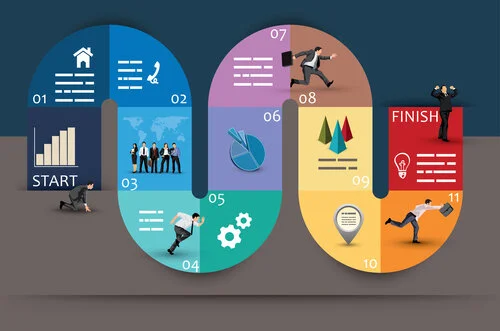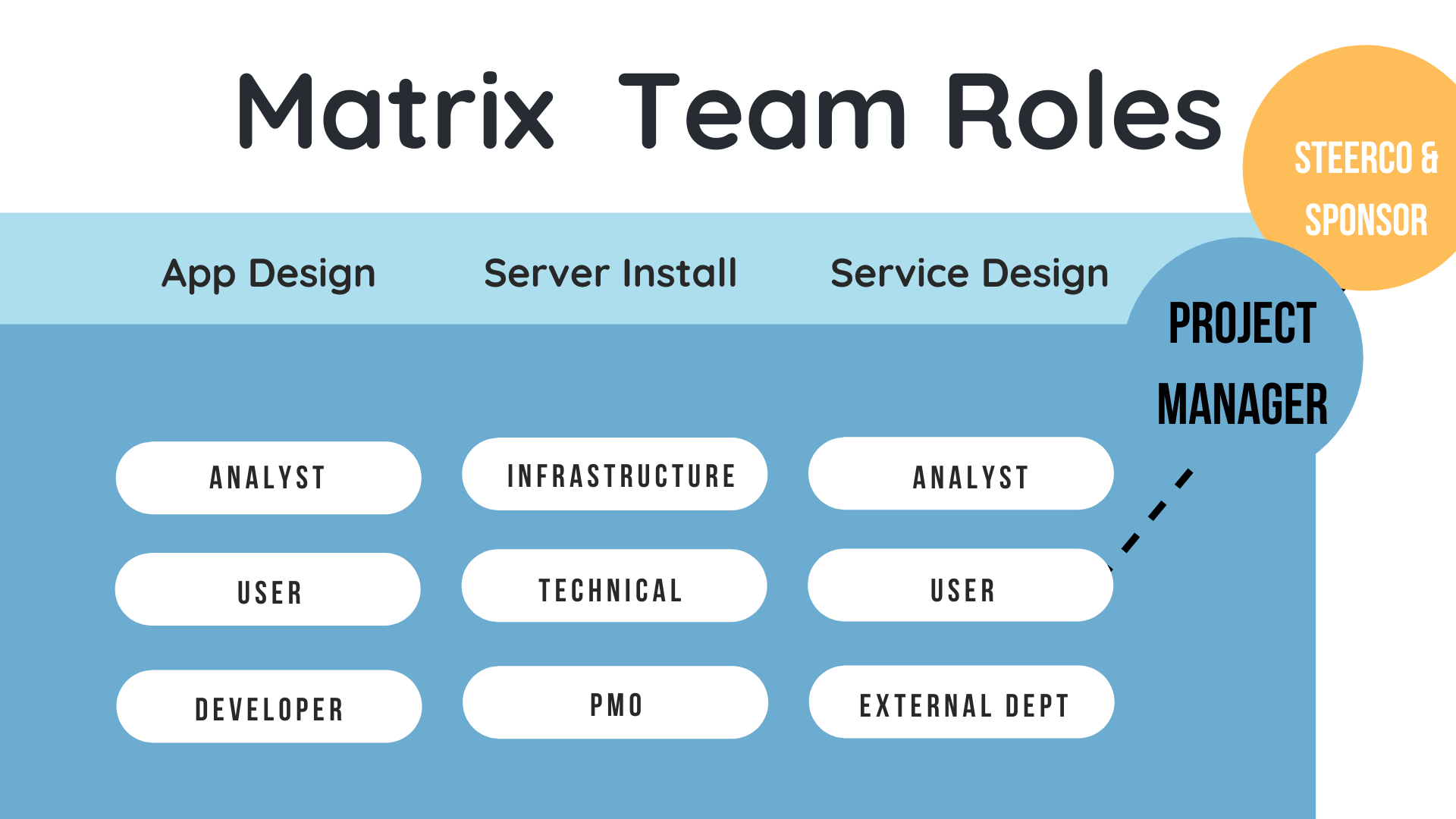Project Management Fundamentals for New Managers
This article is part one of my Project Management Fundamentals Series. This Series will focus on the tools, knowledge and methods used by Project Managers globally.
PM 101
What is a Project
Project Components
The Basics of Project Planning
Project Knowledge Areas
Project Management Methodologies
I will cover a summary of the above topics here and link to other videos or blog links so you can get more details, as needed.
1. What is a Project?
A Project is any work organized to deliver a defined result within a specific time frame.
Project Management uses specific knowledge, skills, and resources to deliver something of value. Projects are managed by a team working in a structured way of working using tools and techniques.
A Project Manager is the leader for the project and the project team. See what a Project Manager is this video (or go to the blog here).
To get us started, lets understand the different types of Projects by looking at a few famous examples:
Build the Burj Khalifa Tower (Construction project)
Designing the Human Genome Project (Process driven project)
Creating the NASA Space Program (Organizational and procurement focused project)
While each of these activities was a project, they all were of a different scale, timeline and demanded different approaches, skills, and team members. But, they also had something in common: a Plan, Budget, Resources, and Timeline.
So what are the common denominators to (almost) every project? This article kicks off a series where we dig into the basics every Project Manager needs to know. In this series, we will focus on:
Processes
Knowledge
Tools
Methods
Approaches
This content represents the skill set and know-how every project manager needs to have. Much like a top mechanic who always knows the right tool for the job- I will show you which tools to use and why.
2. What are the Components of a Project?
Project Charter
This kicks off the Project and Tells the PM everything they need to get started. Including the Business Expectations, Budgets, Timing and Outcomes.
Project Budget
Funding and Contracting. Staff Time, Roles and Costs are documented here.
Team Roles &
Organization
Understand what skills you need. When you need them. What they cost and how they need to work together. Click here for the video.
Time Based Plan
Documenting the full Project Life Cycle of Milestones, Tasks, and Effort Allocation. The Project Plan is the basis for most Project Management.
Monitor and Control
Track the work and the outcomes against planning and expectations.
3. What are the basics of Project Planning?
You have your baseline documents. Charter, Key Dates, and draft Staffing Plan.
Now it is time to build the plan. Below is a simple step-by-step high level plan on a page.
Build the Goal into the Plan
The Project Plan is the tool to navigate the details. So make sure the Goal is aligned throughout the Plan.
The framework of the Plan should reflect the:
Project Goal
Scope
Outcome
Breakdown the work Tasks
This is to the core of the project plan or Work Breakdown Structure (WBS) be sure to document tasks:
By milestone
Dependencies (the task order and relationship)
Quality review (do it, then check it is done correctly)
Estimate time and effort
Timing is more than a date, you also need to estimate the amount of effort needed for each step. Define:
When the work needs to be done
When materials are available
How time is documented (hour, days, effort, elapsed time)
Note project ‘blackout periods’ such as holidays
Create the Staffing Plan
As noted above, document Staff details including:
skillset
availability
role assignment
cost (if needed)
Also consider the staff framework and behavior (see more on the link to this blog)
Assess the Risks
Every plan has risks and assumptions. Consider options in advance to counter your potential problem (see more on the link to this blog ). Document the key facts:
Risk type
Likelyhood the risk will happen
Options (and put them in place in advance)
How to validate a Plan?
Regularly review and update the plan as new information is available or as work is done.
Review the plan with team members and stakeholders for completeness and to keep the plan realistic. Once reviewed, formally document the plan as “approved”.
Adjust the plan based on work done and new information (such as staffing changes). Once you have history of work with the existing staff you will be able to improve your initial estimates.
Save plan versions to allow for comparison as changes are made. This can help when reviewing overruns and looking for deltas in costs.
Stay consistent with how and when you update the plan to avoid confusion for the team.
Keep version control of all records as you update them. When the project plan changes, budgets, staffing, risks, assumptions and more may also change. Update all of the documents together to keep everything synchronized.
4. Project Management Knowledge Areas
PMI's 10 Knowledge Areas is the best framework I have seen. It covers the areas that I have consistently needed on each of my projects over the past 30 years. Why are these important? Because failure of one or more of this areas can lead to project failure - see the video below for more on How Not to Fail.
So let's go through the highlights of each of these Project Knowledge Areas!
Source: PMI.org PMBOK
Stakeholder Management - Stakeholders are your Project's customers: The executive who sponsors the Project, Manager who will run or manage the delivered results, and Users who will adopt the new product, solution, or service.
Scope - This is the clear and concise definition of what is being delivered: the solution specifications, process documentation, and timing. It also should include out-of-scope items that might be assumed to be in scope but is not.
Quality - The project outcome is the single most important thing about a project. If everything goes well, but the outcome is not accepted or does not work, the Project has failed. So ensuring that the requirements for quality are clear, communicated, and controlled is critical.
Resources - Management of the people on a project is one of the more complex aspects. Having dedicated team roles to ensure the Project's talent is properly managed is critical. This includes ensuring the right people are hired or assigned, onboarded and trained, and off-boarded as needed.
Schedule - Projects are virtually also time-boxed. Knowing and planning the key dates for the final delivery and milestone stages is critical for any project. Understanding the timing also includes external impacts such as the time needed to get resources, receive approvals, or process documents.
Communication - One of the most underrated parts of any project. Communication is about understanding what, when, and how to share and respond to the various project audiences. Communication includes Team Communication - ensuring everyone knows what is expected and knowledge sharing is taking place. Stakeholder communication provides a 2-way expectations setting. Project Communication to the organization or outside the organization to ensure customers or others are aware of the benefits and changes that the Project will deliver.
Cost - This can include 'sunk' costs for resources or staff already paid for (employees) and costs associated with running the Project (additional contractors, assets, and expenses). Understanding the Project's total cost (including later run costs) is one of the critical aspects of project approval in the form of a business case. Costs are then tracked by the Project to ensure they stay within the parameters set in that document.
Risk - Documenting what can go wrong allows you to plan how to avoid that risk or how to address the solution if it happens. Tracking risks throughout the project lifecycle allows for lessons learned to improve future projects.
Procurement - Almost every Project needs some kind of resource: contracted staff, assets, technology, or space to work. Procurement is the process of getting the right Resources at the right time and price.
Integration - Is the science and art of taking a stand-alone project and dropping it into an existing product, way of working, or organization. This is often a complex and detailed part of project planning. So early assessment, scope, and design of how the Project will be integrated into existing infrastructures is important.
5. Project Management Methodologies
Projects are managed depending on several variables: Type and Scope of Work, Corporate standards, Regulatory requirements are just a few of these variables.
So how does a Project Manager decide on the best Method for their Project? Choosing the right approach and tools is basic knowledge needed for any project Manager. Examples are:
WBS (waterfall)
Agile
CPM
PERT
Mind Maps
Action Sequencing
PERT
See the blog on Top Project Management Planning Software.
Method Comparisons and more
To get started, here is an example of my Agile versus Waterfall (Work Breakdown Structure) comparison.
This just goes to show - there is no ‘one-size-fits-all’ approach to Projects. Knowing your options is what helps Project Managers make the right choices.
There are also approaches that some projects use. Find out more about examples like these:
RACI models
Project Contracting
Change Control User Groups
In the new series on Project Management Fundamentals, I will showcase various project methods and approches and answer questions like:
What the Method is
Why the Metod works
How to use (and when) to use the Method
What other approaches and tools work together with the Method
This series is perfect for a new project manager or team member who needs the framework and real world examples to get started in their new role. I will take you through each of these methods in the coming weeks. If you have an approach or tool you'd like me to discuss, just leave a comment below, and I will do my best to cover it.
I hope you found this information helpful. If you did, please give me feedback or let me know what other topics you’d like me to cover in the comments section below. Thanks!
















